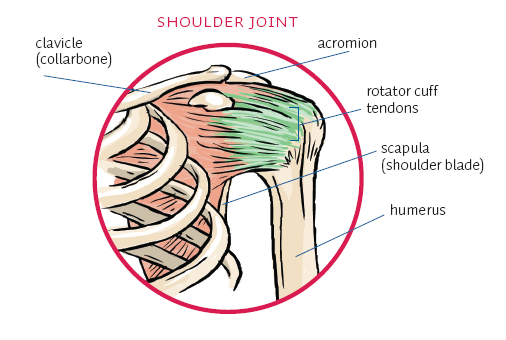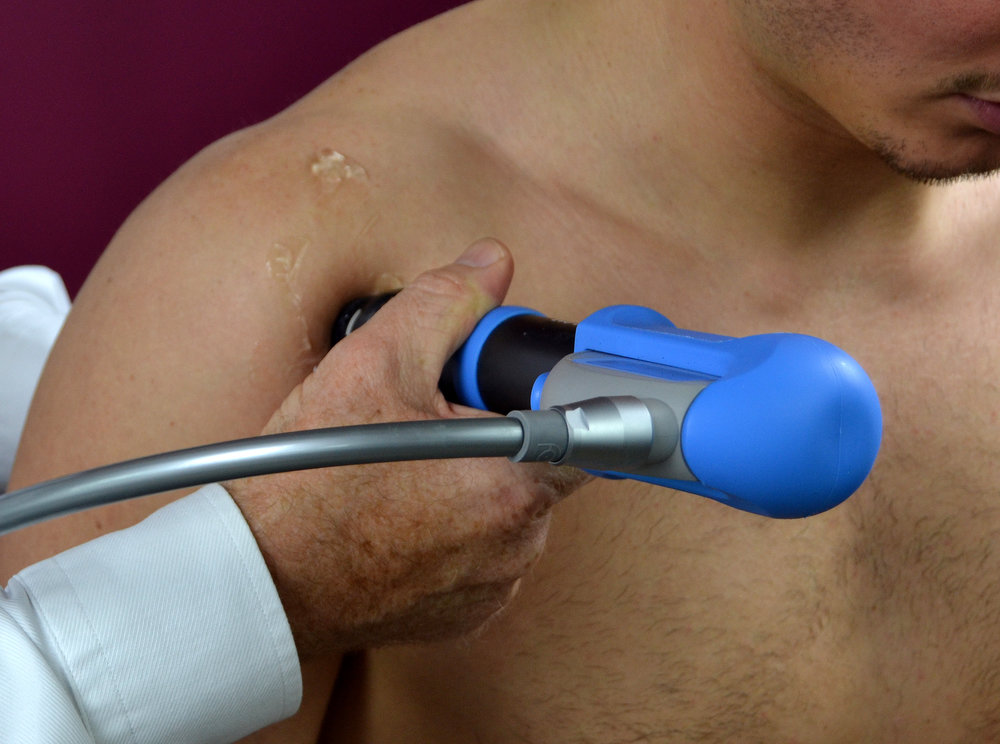nalco group
bone, muscle & joint pain physio
BOOK NOW / WHATSAPP ABOUT YOUR PAIN OR INJURY
- ORCHARD 400 Orchard Road #12-12 Singapore 238875
- TAMPINES 9 Tampines Grande #01-20 Singapore 528735
- SERANGOON 265 Serangoon Central Drive #04-269 Singapore 550265
Home > Blog > Physiotherapy & Hand Therapy > Conditions > Shoulder Pain / Elbow Pain > Biceps Tendon Insertion Tendinopathy Rupture
Biceps Tendon Insertion Tendinopathy Rupture

Shoulder pain is a complaint most
- primary care (GP)
- orthopedic doctors and
- sports medicine clinics
often treat.
What many patients may not be aware that it is actually quite common for shoulder pain to be associated with a bicep’s tendon rupture or injury.
Biceps tendinopathy is essentially the inflammation that occurs around the long head of the biceps muscle. Biceps tendinopathy can occur due to their sudden overuse, particularly among athletes that are over the age of 35.
In this article, we’ll look at:
- Biceps tendinopathy in detail,
- Discuss its causes, symptoms, and treatment options.
first of all, What Is Biceps Tendinopathy?
Biceps tendinopathy is a kind of inflammation can easily happens due to the normal ageing process and / or a degenerative process. It is also quite common in athletes who are involved in a sport that requires repetitive overhead movements such as
- basketball
- swimming
- cricket
- golf
- badminton
- squash
- table tennis
- tennis
- baseball
- shotput
- rugby
- and more
It’s worth noting that this condition has a variety of different causes and it’s often accompanied by a few other shoulder conditions, like rotator-cuff tears and SLAP-lesions.
Moreover, biceps tendon injuries typically include a variety of disorders, from mild tendinopathy to full tendon rupture.
what are the Common Causes of Biceps Tendinopathy Rupture

According to previous research, the causes of biceps tendinopathy include:
- Persistent rotator cuff tears (longer than three months)
- Impingement in the sub-acromial space
- Rotator cuff tears involving subscapularis tendon
- Acromial apophysis fusion
- Coracoacromial ligament thickening
The pathologies listed above can result in biceps tendinopathy, especially with the use of improper biomechanical circumstances movement patterns and repeated trauma due to overuse.
Additionally, repetitive microtrauma (common in racquet or overhead-throwing athletes) may also lead to inflammation of the biceps tendon.
Biceps Tendon Rupture Symptoms to Watch Out for
A biceps tendon rupture can happen when the biceps tendon gets torn away from the insertion point in the bones in the forearm. This can result in a tearing sensation or an audible ‘pop’ in the front side of the elbow, which is known to be quite painful.
(in some circumstances, there may be no pain initially due to adrenaline or heat of the moment, but the pain will gradually increase)
Some common symptoms that patients of biceps tendinopathy experience include, but not limited to:
- Bruising in the forearm and the elbow
- Continued pain
- A feeling of weakness while bending the elbow
- A feeling of weakness while twisting the forearm (supination)
- Warmth in the elbow
- Sharp pain at the elbow or shoulder
- Swelling in the front of the elbow
- Difficulty moving your arm from a ‘palm-down’ to a ‘palm up’ position
- Popeye deformity (a bulger in the upper part of the arm caused by shortened biceps muscle)
In some instances, patients may feel relief from pain that existed before, while in other cases, pain can continue for weeks or even months.
Pain may also disappear if the tendon gets torn completely.
Moreover, muscle spasms are also quite common during this condition. However, the symptoms tend to get better over a couple of weeks.
It’s also important to note that the elbow typically continues to work after a biceps tendinopathy rupture. This is largely due to the fact that there are other muscles that can perform part of the function of the biceps muscle.
If you have a torn bicep tendon, you may experience fatigue with repetitive movements, like turning a screwdriver, if you don’t seek medical attention right away to get your tendon repaired. Patients are also known to have a history of inflicting sudden eccentric force on a flexed elbow.
They may feel a sudden sharp pain in their shoulder or elbow, depending on where the rupture is located.
It’s also worth considering that the presence of ‘popeye deformity’ is usually hard to determine in obese individuals.
Among patients with proximal biceps tendon rupture, there are surprisingly very few signs and symptoms other than discomfort and pain.
Since this disorder is generally associated with rotator cuff disease, it’s important to get yourself checked for shoulder impingement as well as atrophy of shoulder girdle muscle.
Fortunately, this kind of rupture doesn’t lead to long-term changes in your shoulder or elbow strength.
Who’s More at Risk?
Repetitive inflammation can cause a weakness in the tendon that may result in reduced function and pain, as observed in other forms of tendinopathy.
Other activities, such as wrestling, weightlifting, and labor-intensive jobs, can also lead to distal biceps rupture.

In addition to age, the risk factors of biceps tendinopathy include
- smoking
- obesity and
- use of corticosteroids
Furthermore, a lack of adequate blood supply can also contribute towards tendon rupture.
In rare cases, diabetes, chronic kidney disease, lupus, and the use of quinolones is also found to potentiate tendon rupture.
If you didn’t know, biceps tendon rupture is most common in men aged over 30 but it can occur in women and men at any age. Most injury incidents are known to occur during middle age (around 35 to 57 years of age).
Proximal biceps rupture happens more frequently to elderly patients and it’s a lot more common as opposed to distal biceps tendon rupture.
There are a variety of medical conditions that can also put people at a higher risk of having tendon rupture. Chronic steroid use (whether to gain muscle or for medical purposes) can also increase your chances of having biceps tendinopathy.
Conditions That Are Similar to Biceps Tendinopathy

Needless to say, diagnosing biceps tendinopathy can be quite challenging at times.
The investigator should keep in mind that proximal biceps tendon rupture is typically accompanied by shoulder girdle instability as well as rotator cuff disorders.
Differential diagnosis may include:
- Rotator cuff disease
- Impingement syndrome
- Humeral fracture
- Radial head fracture
- Shoulder dislocation / instability
Biceps Tendon Rupture Treatment
More often than not, diagnosis is made clinically, whereas imaging can prove helpful in rare cases where a diagnosis isn’t clear or partial tendon rupture is being considered.
Let’s take a look at the criteria that’s defined for the diagnosis of biceps tendinopathy:
- History of a single traumatic incident
- Visible signs of popeye deformity (retraction of the biceps muscle belly)
- A feeling of weakness while flexing the elbow and twisting of the forearm (supination), especially in cases of distal biceps tendon rupture
Partial tendon ruptures are often accompanied by similar yet subtle symptoms, in addition to pain and weakness, and there’s usually no visible sign or defect. This can sometimes result in delayed diagnosis, which can cause the symptoms to worsen.
Imaging Ultrasound is found to be a non-invasive as well as an inexpensive tool that can help your doctor check the absence of the tendon.
Moreover, radiographs typically cannot help with diagnosis. Still, it’s advisable to check for similar accompanying disorders. In rare instances, MRI is also performed to distinguish between the following:
- Tendon tear vs. muscle substance
- Partial vs. complete tendon rupture
- Degree of retraction
Conservative Treatment of biceps tendon insertion tendinopathy rupture
Initial stages of treatment generally focus on managing and reducing pain and the use of NSAIDs.
If this proves to be ineffective, steroid injections may be used to manage pain. For more persistent symptoms, corticosteroid injections along the tendon sheath may be considered helpful.
It’s recommended that conservative measures are taken in medically complicated as well as low-functioning patients, at least in the early stages. Other non-surgical treatment options that may help relieve pain and restore arm function include:
Rest
You must avoid any overhead activities and heavy lifting to reduce swelling and discomfort. Your healthcare provider may recommend using a sling for a short period of time as well.
Nonsteroidal Anti-inflammatory Drugs (NSAIDs)
Medications like naproxen and ibuprofen can also help reduce pain and swelling.
Surgical Treatment
If conservative management of pain has been unsuccessful, then surgical intervention may become necessary.
Surgical treatment is generally considered as a treatment option for patients with higher functional levels and athletes who have extensive active pathology as well as other shoulder pathology like rotator cuff disorder.
Typically, a biceps tenodesis or tenotomy is carried out via open or arthroscopic incisions. This involves removing the long head of the biceps tendon, which has been shown to maintain normal function and provide significant reductions in pain levels.
Shoulder Physiotherapy Management
Once the pain decreases or becomes a lot more manageable, your doctor may suggest performing rehabilitation exercises that will help restore movement by providing strength to the surrounding muscles.

Physical therapy is a common treatment option for biceps tendinopathies. It initially focuses on unloading and then reloading the affected tendon.
If the pain happens to be the most persistent issue, physical therapy may begin with isometric training and later progress into eccentric training. Most physical therapy programs also include stretching and strengthening exercises.
Some therapists utilize other modalities like
- iontophoresis
- ultrasound therapy
- low-level-laser therapy
- ranging and stretching exercises
- strengthening exercises
- deep transverse friction
massage and
- heat therapy
to repair biceps tendon rupture.
It’s important for your physical therapist to consider your response to the rupture as well as the physiological mechanism involved in the process of tissue healing to help you return to optimal performance in little to no time. Avoid engaging in painful activities like abduction in the initial stages of recovery as that can make your symptoms worse.
If you think that you have a torn bicep tendon, contact us at Phoenix Rehab to consult our principal shoulder physiotherapists to get your shoulder pain and biceps tendon insertion tendinopathy sorted out asap.
